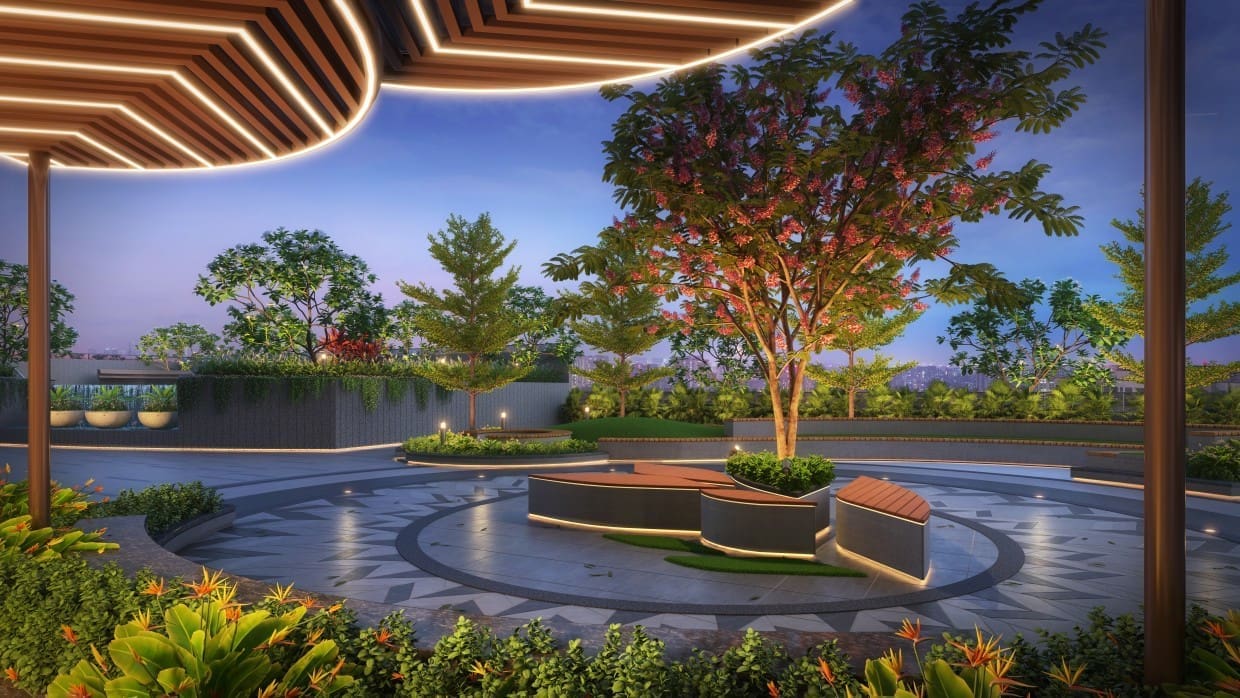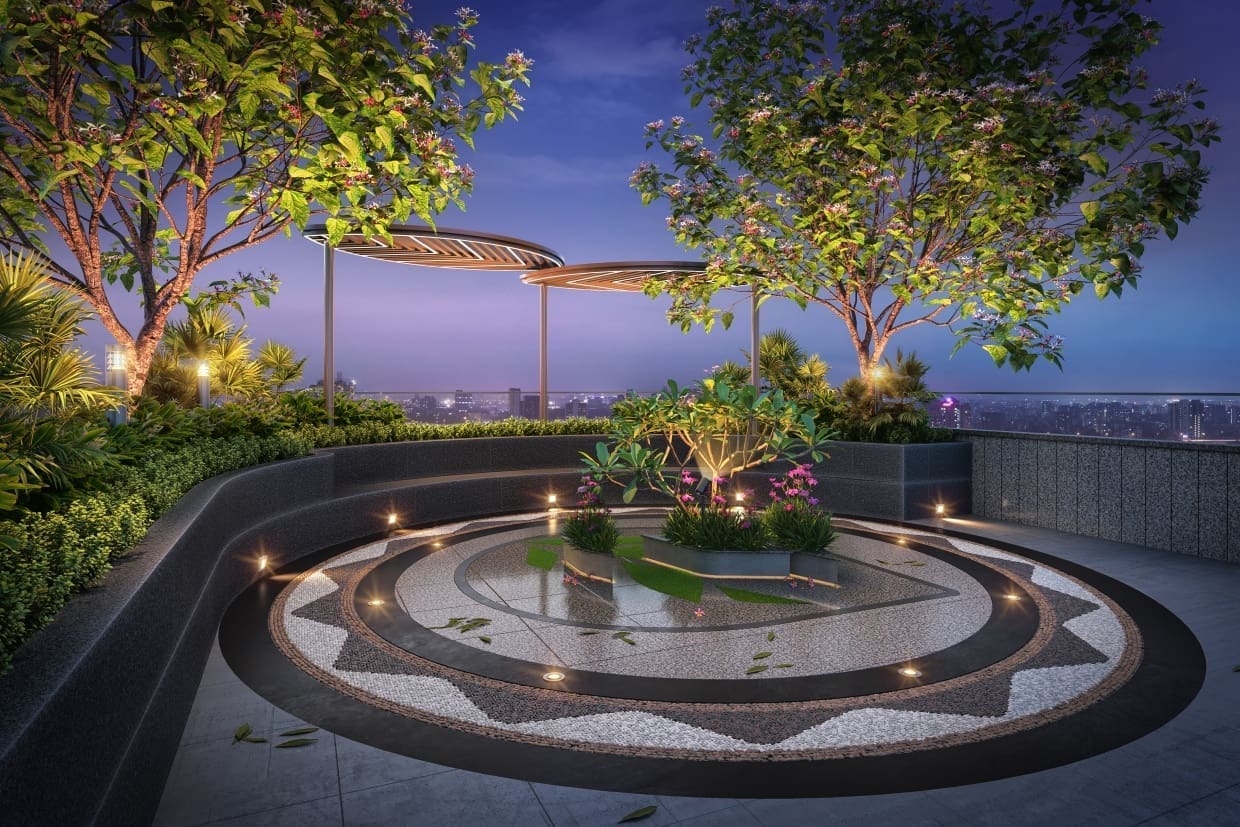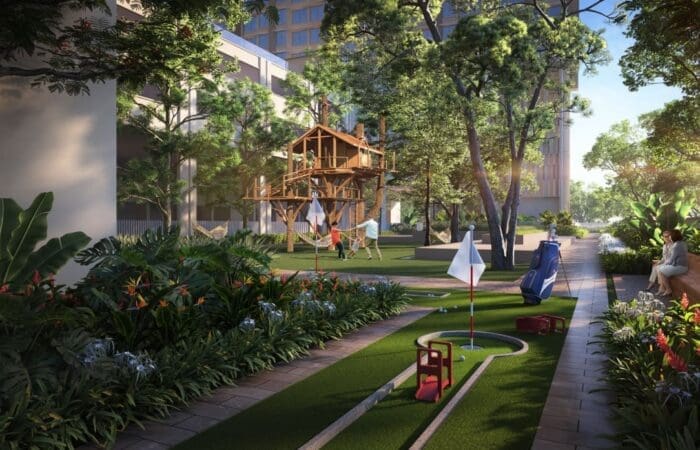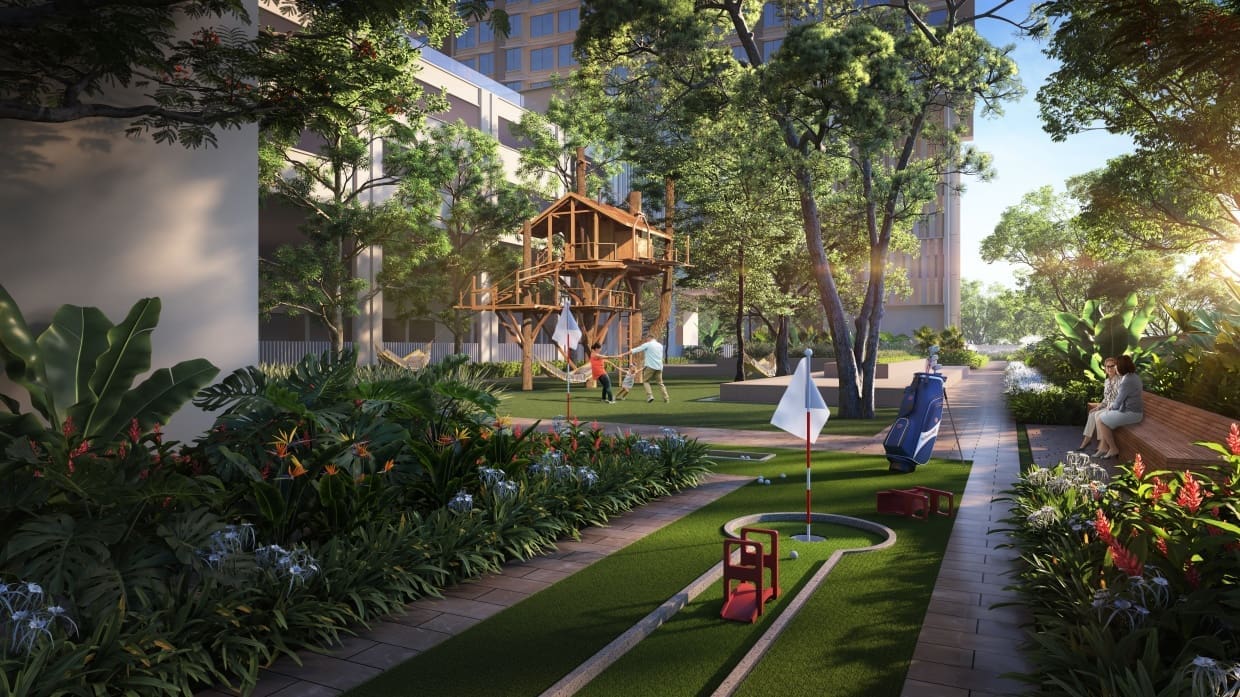Introduction
In the densely populated metropolis of Mumbai, the integration of natural elements into urban architecture—known as biophilic design—has emerged as a pivotal approach to enhancing the quality of life. This design philosophy seeks to bridge the gap between urban living and the natural environment, fostering spaces that promote well-being, productivity, and ecological harmony.

Podium by Kalakrut Architects & Planners.
The Essence of Biophilic Design
Biophilic design is rooted in the human intrinsic connection to nature. It encompasses strategies that incorporate natural light, ventilation, vegetation, and water features into built environments. Research indicates that such integration can lead to reduced stress levels, improved cognitive function, and enhanced mood among occupants.
Implementing Biophilic Principles in Mumbai
Given Mumbai’s spatial constraints and climatic conditions, implementing biophilic design requires innovative solutions:
Vertical Gardens and Green Facades: Utilizing building exteriors for vegetation not only enhances aesthetics but also improves air quality and provides thermal insulation.
Courtyards and Atriums: Incorporating internal open spaces allows for natural light penetration and cross-ventilation, creating comfortable microclimates within structures.
Water Elements: Features such as reflecting pools or indoor fountains introduce calming auditory and visual stimuli, contributing to a serene environment.

Arkade group Biophilic Podium Design.
Case Study: Arkade Group
A notable example is the Arkade Group Aparments, in Mumbai designed by Kalakruti Architects. This residence features expansive terraces with lush greenery, seamlessly blending indoor and outdoor spaces. The design prioritizes openness and personal expression, reflecting a post-lockdown aspiration for connection with nature.
Kalakruti’s Approach
At Kalakruti Architects and Planners, we are committed to integrating biophilic principles into our projects. By thoughtfully incorporating natural elements, we aim to create spaces that not only meet functional requirements but also enrich the human experience, fostering a profound connection with the environment.
Conclusion
Biophilic design offers a pathway to more liveable and sustainable urban environments in Mumbai. Through innovative design strategies, architects can transform the city’s landscape into one that harmoniously coexists with nature, enhancing the well-being of its inhabitants





















